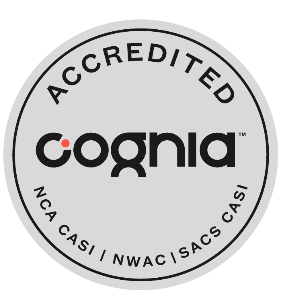On a Wednesday morning in January 2017, Unified Police asked Midvale Elementary to activate what’s now known as a “secure” protocol while they responded to reports of a bank robbery near the school.
All students were already safe inside their classrooms, busy learning as usual and largely oblivious to the safety protocol, which lasted all of 20 minutes. But had any students or faculty been outside on the playground, Dr. Chip Watts, who was the school’s principal, would have calmly escorted them back inside the building and directed them to return to class before locking the school’s external doors and notifying parents.
School would have carried on as it always does with students free to move about the building and visit the Media Center or Main Office. “The whole point behind a secure protocol is to secure the building with everyone inside without interrupting instruction or causing any worries,” Watts says. “When done right, it should feel to students like just another day at school.”
Put simply, “secure” is a precaution taken to keep staff and students safe indoors when there is a hazard outside the school building, such as criminal activity in the neighborhood or dangerous dog on the loose. Described under a new Standard Response Protocol (SRP) adopted by all K-12 schools in Utah, the term “secure” replaces what was previously known in Canyons as “shelter in place.”
“This is a precaution our schools are well-practiced at, because we do drills on it annually,” said Ryan Jakeman, CSD’s Risk Manager. “It may take some time for our community to get used to the new terminology. But the benefit of the SRP is that now all Utah schools and police agencies are using shared verbiage. There should be no confusion about what we mean when we use the words, ‘secure’ versus a ‘lockdown.’”
The SRP consists of five different measures a school can take at any time, depending on the type of emergency situation: Hold, Secure, Lockdown, Evacuate, and Shelter. Explainer videos describing what happens in a secure versus a lockdown or evacuation — along with a calendar for when schools hold emergency drills — can be found on CSD’s Think Safe website.
Every CSD classroom also now has a graphic displayed describing the protocols, what they mean, and what students and adults alike should do. Watts, currently the Principal at Draper Park Middle School, says those graphics help.
“It’s easy to remember, and it’s helpful to have that reminder right there on the wall or in your classroom,” Watt says. “I’ve also noticed those same graphics at my kids’ schools in a different district. I think it’s great that schools across the state are using the same language, and that first responders are using the same language.”
When a secure measure is called, the announcement will be made: “Attention, students and staff, we are in a secure. If you are outside the building, return to the building or your portable classroom. If you are outside the building, return to the building or your portable classroom.” The District will notify families and include verified details so as to put their minds at ease.
In a secure status, typically no one is allowed inside or out of the building. At times, there may be “monitored entry” if police deem the threat is not immediate. In such a case, students and staff walking between buildings would be escorted with heightened awareness.
“Sometimes the tendency for parents is to rush to campus, but we discourage this, because it can put parents in harm’s way and obstruct police as they are attempting to do their job,” Watts said.
In addition to holding regular emergency drills, schools also work with police departments in Draper, Cottonwood Heights, and Sandy, as well as with Unified Police to perform in-school walk-throughs and emergency exercises.
After school starts, schools across Canyons have single-point entry, which means anyone coming into the school’s lobby must walk through the Main Office before entering the building.
Watts also praises the good relationships with the School Resource Officers who are assigned to each CSD school.
“I think there are a lot of great things happening. Along with those things there is an ever present need to be vigilant and be aware,” says Watts. “We don’t want to promote a culture of fear or anxiety, we just want to keep safety in mind.”
IN AN EMERGENCY
TAKE ACTION
HOLD! In your room or area. Clear the halls.
STUDENTS
- Clear the hallways and remain in room or area until the “All Clear” is announced
- Do business as usual
ADULTS
- Close and lock the door
- Account for students and adults
- Do business as usual
SECURE! Get inside. Lock outside doors.
STUDENTS
- Return to inside of building
- Do business as usual
ADULTS
- Bring everyone indoors
- Lock outside doors
- Increase situational awareness
- Account for students and adults
- Do business as usual
LOCKDOWN! Locks, lights, out of sight.
STUDENTS
- Move away from sight
- Maintain silence
- Do not open the door
ADULTS
- Recover students from hallway if possible
- Lock the classroom door
- Turn out the lights
- Move away from sight
- Maintain silence
- Do not open the door
- Prepare to evade or defend
EVACUATE! (A location may be specified)
STUDENTS
- Leave stuff behind if required to
- If possible, bring your phone
- Follow instructions
ADULTS
- Lead students to Evacuation location
- Account for students and adults
- Notify if missing, extra or injured students
or adults
SHELTER! Hazard and safety strategy.
STUDENTS
Use appropriate safety strategy for the hazard
ADULTS
- Lead safety strategy
- Account for students and adults
- Notify if missing, extra or injured students
or adults
Hazard
Safety Strategy
Hazard
Safety Strategy
Tornado
Evacuate to shelter area
Hazmat
Seal the room
Earthquake
Drop, cover and hold
Tsunami
Get to high ground












